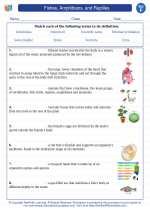Tectonic Plates
Tectonic plates are large pieces of the Earth's lithosphere that move and interact with each other. These plates cover the Earth's surface and the interactions between them can cause a variety of geological phenomena, such as earthquakes, volcanic eruptions, and the formation of mountain ranges.
Plate Boundaries
There are three main types of plate boundaries:
- Divergent Boundaries: where plates move apart from each other
- Convergent Boundaries: where plates move towards each other
- Transform Boundaries: where plates slide past each other
Movement of Tectonic Plates
Tectonic plates can move in different directions and at various speeds. This movement is driven by forces such as mantle convection, slab pull, and ridge push. As the plates move, they can interact at the boundaries, leading to the creation of new crust, the destruction of old crust, and the release of seismic energy in the form of earthquakes.
Effects of Plate Movement
The movement of tectonic plates has a significant impact on the Earth's surface. It can lead to the formation of mountains, ocean basins, and volcanic activity. Additionally, the interactions between plates can cause earthquakes, which can have devastating effects on the surrounding areas.
Studying Tectonic Plates
Studying tectonic plates is essential for understanding the Earth's geological processes and for predicting natural disasters such as earthquakes and volcanic eruptions. Geologists and seismologists use various methods, such as seismology, GPS measurements, and satellite imagery, to monitor the movement of tectonic plates and to better understand the forces driving their motion.
Study Guide
Here are some key points to remember about tectonic plates:
- The Earth's lithosphere is divided into tectonic plates that move and interact at plate boundaries
- There are three main types of plate boundaries: divergent, convergent, and transform
- Plate movement is driven by forces such as mantle convection, slab pull, and ridge push
- The movement of tectonic plates can lead to geological phenomena such as earthquakes, volcanic eruptions, and mountain formation
- Studying tectonic plates is important for understanding Earth's geological processes and predicting natural disasters
[Tectonic Plate] Related Worksheets and Study Guides:
.◂Science Worksheets and Study Guides Sixth Grade. Fishes, Amphibians, and Reptiles

 Activity Lesson
Activity Lesson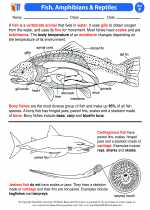
 Worksheet/Answer key
Worksheet/Answer key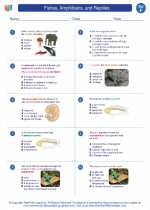
 Worksheet/Answer key
Worksheet/Answer key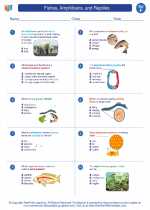
 Worksheet/Answer key
Worksheet/Answer key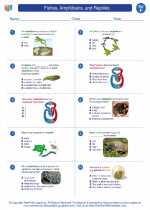
 Worksheet/Answer key
Worksheet/Answer key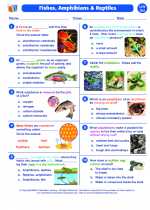
 Vocabulary/Answer key
Vocabulary/Answer key
 Vocabulary/Answer key
Vocabulary/Answer key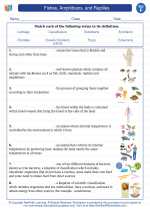
 Vocabulary/Answer key
Vocabulary/Answer key
 Vocabulary/Answer key
Vocabulary/Answer key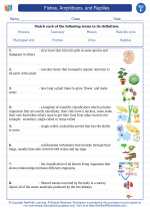
 Vocabulary/Answer key
Vocabulary/Answer key